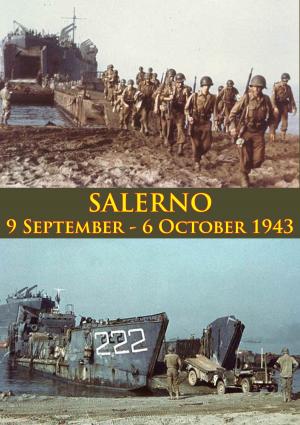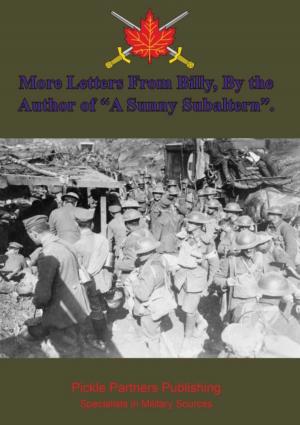| Author: | Captain Herbert W. McBride | ISBN: | 9781786255501 |
| Publisher: | Lucknow Books | Publication: | November 6, 2015 |
| Imprint: | Lucknow Books | Language: | English |
| Author: | Captain Herbert W. McBride |
| ISBN: | 9781786255501 |
| Publisher: | Lucknow Books |
| Publication: | November 6, 2015 |
| Imprint: | Lucknow Books |
| Language: | English |
Includes the First World War Illustrations Pack – 73 battle plans and diagrams and 198 photos
The classic account of sniping on the Western Front.
“Herbert Wesley McBride was a Captain in the Twenty-first Battalion, Canadian Expeditionary Force, during the First World War. He was a sniper and commander of a machine gun unit known as the “Emma Gees.” He was also the author of two books on the war: “A Rifleman Went To War” (1933) and “The Emma Gees” (1918)...When the war started, he volunteered in a Canadian rifle company in Ottawa because he wanted to see action as quickly as possible. He was commissioned as an officer, but was reduced to a private due to several drunken incidents. He shipped to England for training and then to the Western Front, where he participated in battles around Ypres and the Somme throughout 1916.
In his book, “A Rifleman Went To War,” he recounts killing more than 100 German soldiers as a sniper. This book is highly regarded by students of riflery, it’s mandatory reading in the U.S. Marine Corps Sniping School. It is also considered one of the best first-person accounts of World War I, often being compared favorably to “Storm of Steel” by Ernst Junger. However McBride notes in his book that by the end of 1916 he felt in his heart “the game was over,” and a series of alcoholic binges resulted in his court martial and dismissal from the Canadian Expeditionary Force in February 1917. He then joined the United States Army’s 38th Division, serving out the war as a marksmanship and sniping instructor at Camp Perry. He resigned in October 1918. After the war, he worked in the lumber industry in Oregon for most of his later years. He died in Indianapolis of a sudden heart failure on March 17, 1933, shortly after finishing “A Rifleman Went To War.” He was 60.”-Canadaatwar.com
Includes the First World War Illustrations Pack – 73 battle plans and diagrams and 198 photos
The classic account of sniping on the Western Front.
“Herbert Wesley McBride was a Captain in the Twenty-first Battalion, Canadian Expeditionary Force, during the First World War. He was a sniper and commander of a machine gun unit known as the “Emma Gees.” He was also the author of two books on the war: “A Rifleman Went To War” (1933) and “The Emma Gees” (1918)...When the war started, he volunteered in a Canadian rifle company in Ottawa because he wanted to see action as quickly as possible. He was commissioned as an officer, but was reduced to a private due to several drunken incidents. He shipped to England for training and then to the Western Front, where he participated in battles around Ypres and the Somme throughout 1916.
In his book, “A Rifleman Went To War,” he recounts killing more than 100 German soldiers as a sniper. This book is highly regarded by students of riflery, it’s mandatory reading in the U.S. Marine Corps Sniping School. It is also considered one of the best first-person accounts of World War I, often being compared favorably to “Storm of Steel” by Ernst Junger. However McBride notes in his book that by the end of 1916 he felt in his heart “the game was over,” and a series of alcoholic binges resulted in his court martial and dismissal from the Canadian Expeditionary Force in February 1917. He then joined the United States Army’s 38th Division, serving out the war as a marksmanship and sniping instructor at Camp Perry. He resigned in October 1918. After the war, he worked in the lumber industry in Oregon for most of his later years. He died in Indianapolis of a sudden heart failure on March 17, 1933, shortly after finishing “A Rifleman Went To War.” He was 60.”-Canadaatwar.com
![Cover of the book The Emma Gees [Illustrated Edition] by Captain Herbert W. McBride, Lucknow Books](https://www.kuoky.com/images/2015/november/500x500/9781786255501-8RDw_500x.jpg)



![Cover of the book Contemptible [Illustrated Edition] by Captain Herbert W. McBride](https://www.kuoky.com/images/2015/november/300x300/9781786251114-fijE_300x.jpg)
![Cover of the book My Experiences In The World War – Vol. I [Illustrated Edition] by Captain Herbert W. McBride](https://www.kuoky.com/images/2014/june/300x300/9781782891277-RM7d_300x.jpg)
![Cover of the book From Mons To Ypres With General French; A Personal Narrative [Illustrated Edition] by Captain Herbert W. McBride](https://www.kuoky.com/images/2012/april/300x300/9781782890720-En6x_300x.jpg)




![Cover of the book Adventures In Propaganda; Letters From An Intelligence Officer In France [Illustrated Edition] by Captain Herbert W. McBride](https://www.kuoky.com/images/2013/march/300x300/9781782890652-UHRZ_300x.jpg)



